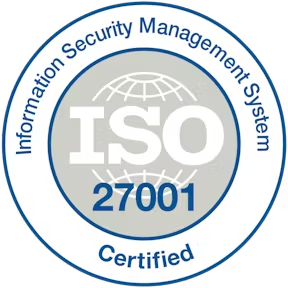If you have ever spent hours grading exams or assignments, you know how easily it can take over your schedule. That is exactly why Gradescope was created. Developed by a team at the University of California, Berkeley, and now part of Turnitin, it is a platform built to make grading faster, fairer, and a lot less stressful.
So, what is Gradescope? The concept is straightforward. You upload your exams, assignments, or projects, and Gradescope automatically organizes them for review. Its AI tools can recognize similar answers, group them, and let you grade once instead of a hundred times. Whether you are working with paper-based exams, digital submissions, or code assignments, it adapts to almost any teaching style or subject area.
What makes Gradescope even more appealing is how well it fits into existing classroom systems. It connects smoothly with learning management tools like Canvas, Blackboard, Moodle, and Brightspace, so grades sync automatically. Teachers save time, students get faster feedback, and everyone benefits from a more organized grading process.
Throughout this article, we will take a closer look at how Gradescope works, explore its key features, talk about pricing, and compare it with other tools that educators use for grading and assessment.
Key Features of Gradescope
Gradescope offers a wide range of tools designed to make grading faster, more consistent, and easier for both teachers and students:
AI-Assisted Grading
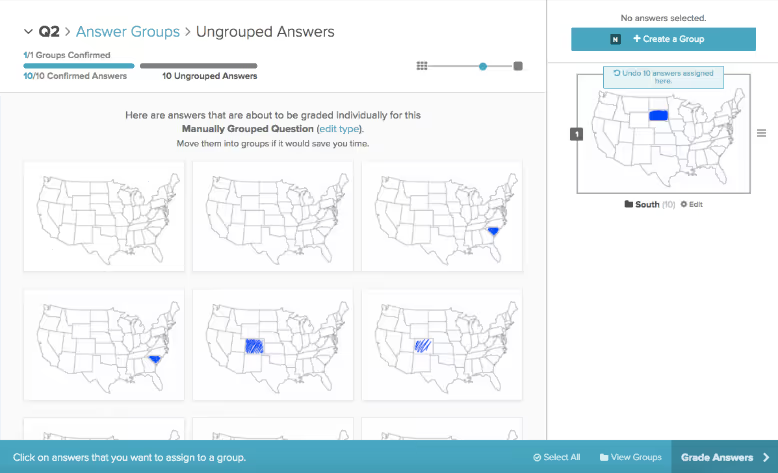
One of the most impressive Gradescope features is its use of artificial intelligence to make grading faster. The system can recognize patterns in student responses and group similar answers together. Teachers then grade one example and apply the same feedback to all matching submissions.
This is a huge time-saver in math, science, or computer science courses where students often solve problems in similar ways. The AI improves with use but never takes control away from instructors. Teachers always make the final grading decisions.
Flexible Assessment Types
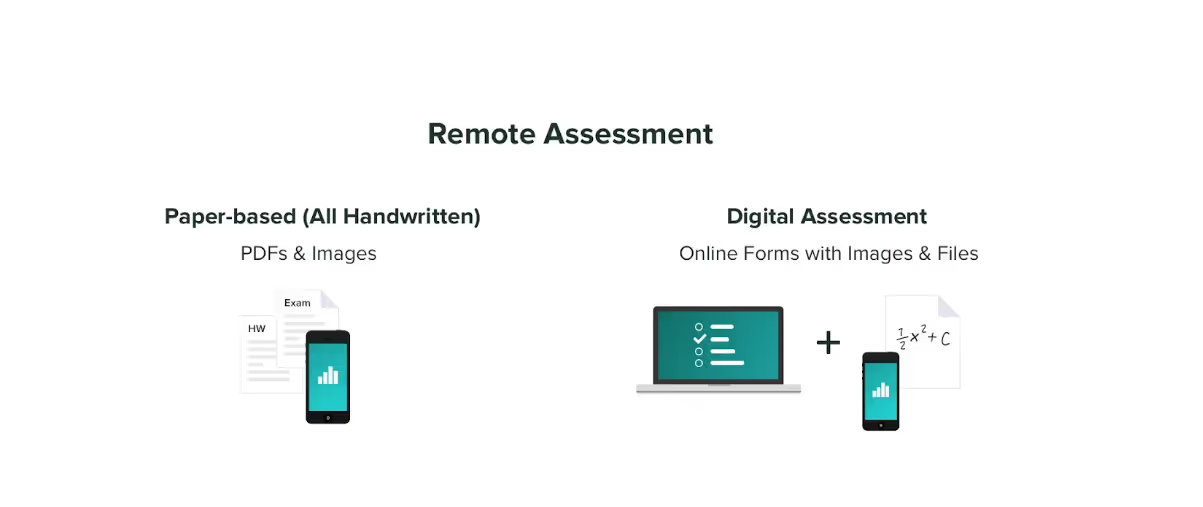
Gradescope supports a wide variety of assignment types. Teachers can upload scanned handwritten exams, create digital assignments, use multiple-choice bubble sheets, or even grade programming projects. The interface makes it easy to switch between viewing individual students and specific questions.
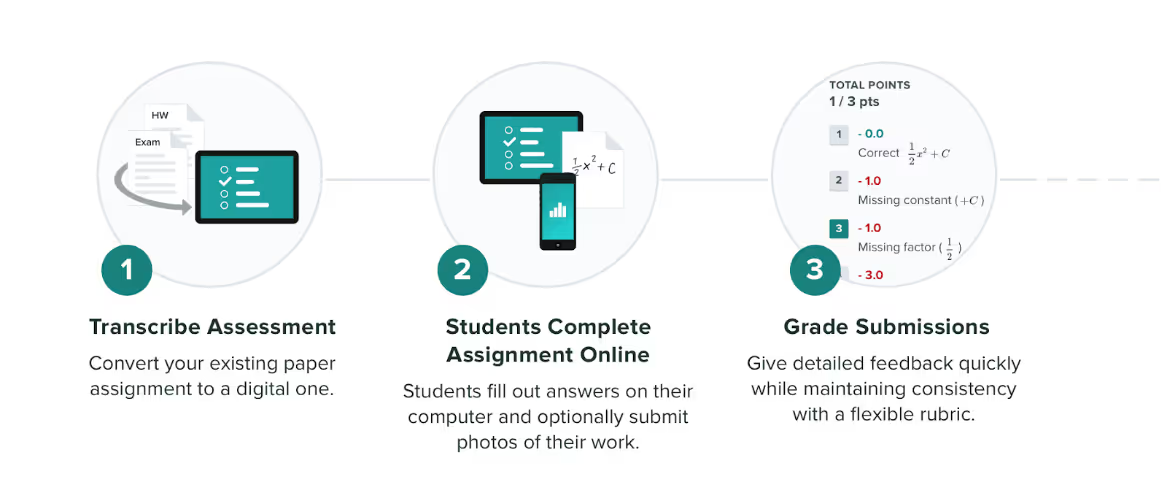
This flexibility allows educators to use Gradescope for almost any course, from literature to engineering. It is also easy to reuse assignments or rubrics across different semesters or classes.
Rubric-Based Evaluation
Rubrics are at the heart of Gradescope’s design. Teachers can create clear, detailed rubrics that ensure consistency in scoring. If the rubric changes halfway through grading, the system automatically updates all previously graded submissions.
This feature helps maintain fairness, especially when multiple instructors or teaching assistants are grading together. Everyone uses the same rules, and all feedback stays uniform.
Integrations and LMS Compatibility
Gradescope integrates smoothly with the most popular learning management systems, including Canvas, Blackboard, and Brightspace. Teachers can import class rosters, set up assignments, and sync grades directly into their LMS.
Because Gradescope is owned by Turnitin, it also connects easily with Turnitin’s plagiarism and AI detection tools. That combination creates a complete grading and integrity management system inside the tools educators already use.
Collaboration and Feedback Tools
Grading can be a team effort, and Gradescope makes it easy for multiple people to collaborate. Professors, TAs, or graders can work together on the same assignments while keeping scoring consistent. Each grader’s activity is tracked, which adds transparency to the process.
Students also benefit from this setup. They can see exactly how they were graded, view detailed feedback, and request regrades when needed. It keeps communication open and helps students learn from their mistakes.
Accessibility and Analytics
Gradescope follows accessibility standards such as WCAG 2.1, which means it can be used comfortably by people with different needs. It also includes built-in analytics that track grading times, common errors, and overall student performance.
Teachers can use these insights to identify where students are struggling and adjust their teaching accordingly.
AI Detection and Academic Integrity
The rise of AI tools like ChatGPT has many teachers asking how grading platforms handle AI-generated work. When it comes to Gradescope, things are pretty simple. At the moment, Gradescope lacks direct AI detection capabilities, so it cannot independently recognize AI-generated text. Its focus is on helping teachers grade faster by grouping similar answers and making the process smoother.
However, because Gradescope is part of the Turnitin family, many schools link the two systems. When Turnitin’s AI detection feature is turned on inside Gradescope, teachers can see reports that flag work that might have been written with AI tools. In this setup, Gradescope takes care of grading and feedback, while Turnitin handles originality and integrity checks.
It is a smart combination that gives educators the best of both worlds. Gradescope makes grading quick and consistent, and Turnitin helps maintain academic honesty. On its own, Gradescope does not detect AI writing, but when used with Turnitin, it becomes a complete and reliable solution for keeping assessments fair.
Instructor and Student Controls
Gradescope is built to make grading transparent for both teachers and students. It gives instructors complete control while keeping the process simple.
Can Teachers See Submission History on Gradescope
Yes. Instructors can view the full submission history for every student. That includes timestamps, resubmissions, and file versions. This visibility ensures that teachers know exactly when work was turned in and prevents confusion about deadlines or missing files.
This transparency is particularly useful for large classes where managing hundreds of submissions can otherwise get messy.
How to Unsubmit on Gradescope
Students sometimes ask how to unsubmit on Gradescope after uploading the wrong file. In most cases, students cannot unsubmit once the deadline has passed. However, instructors can choose to reopen a submission window or allow resubmissions if they believe it is appropriate.
Teachers have full control here. They can reset assignments, extend deadlines, or re-enable submissions for specific students when needed.
Pricing and Plans
Gradescope uses a flexible pricing model that fits different types of educators and institutions. For individual teachers, there is a free plan that covers basic grading tools, perfect for small classes or for anyone wanting to test the platform before introducing it to their school.
For larger institutions, paid plans typically start at around one to two dollars per student per year, based on the number of enrolled learners and the features included. Prices can increase for enterprise packages that come with full integrations, analytics, and support. Most universities, especially those already using Turnitin, often include Gradescope as part of their existing Turnitin subscription, which also unlocks plagiarism and AI detection tools.
Since every school’s setup and student count are different, Gradescope provides customized quotes rather than publishing fixed prices online. Educators who have shared their experience say that the platform delivers excellent value, especially for the time it saves during grading seasons.
Pros and Cons
Gradescope offers plenty of advantages for educators. It speeds up grading with AI assistance, keeps evaluations consistent, and integrates smoothly with major LMS platforms. Teachers can handle handwritten, digital, and coding assignments in one place and manage regrade requests easily.
Despite its strengths, it has a few weak spots worth noting. New users may need time to learn the system, it lacks built-in AI detection, and pricing details are not publicly available. Some educators also note that its analytics could be more advanced and that the interface takes a bit of getting used to.
Top Alternatives to Gradescope
Gradescope is powerful, but it is not the only tool available. Depending on your course type and teaching style, one of these Gradescope alternatives might suit you better.
1. Turnitin Feedback Studio
Turnitin Feedback Studio is a writing evaluation platform that focuses on originality, grammar feedback, and detailed instructor comments.
How It Competes with Gradescope:
While Gradescope focuses on grading efficiency, Feedback Studio shines in academic integrity and text analysis. It detects plagiarism and AI-generated writing, offering a depth of feedback that Gradescope alone cannot match. For writing-heavy courses, it often becomes the preferred tool.
Key Highlights:
- Industry-leading plagiarism and AI writing detection.
- Inline commenting and grammar feedback for essays and reports.
- Integrates with most major LMS platforms.
- Perfect for courses centered on writing, research, and academic integrity.
2. Crowdmark
Crowdmark is a digital grading platform designed for scanned paper exams and handwritten assignments. It turns traditional testing into a more organized, online process.
How It Competes with Gradescope:
Crowdmark competes directly with Gradescope’s paper-based grading tools. It specializes in collaborative grading and streamlined scanning, which makes it especially useful for large classes or institutions that rely heavily on in-person exams.
Key Highlights:
- Optimized for digitizing and grading paper-based exams.
- Supports multiple graders with shared rubrics and feedback tracking.
- Simplifies distributing, grading, and returning handwritten assessments.
- Ideal for universities transitioning from manual to digital exam grading.
3. CodeGrade
CodeGrade is a platform designed specifically for coding and STEM courses. It automates code testing, feedback, and grading while connecting directly to major LMS platforms.
How It Competes with Gradescope:
CodeGrade goes deeper into programming assignments than Gradescope does. While Gradescope supports code submissions, CodeGrade includes automatic testing, live feedback, and GitHub integration. It is tailored for instructors who need to evaluate code quality and functionality rather than just grading submissions manually.
Key Points:
- Automates grading for coding assignments with built-in testing.
- Integrates with GitHub and multiple LMS systems.
- Provides real-time feedback for students learning to code.
- More specialized for technical and programming courses than Gradescope.
Final Verdict
Gradescope has earned its reputation as a go-to tool for educators who want grading to be faster, fairer, and more transparent. It removes much of the stress that comes with managing large volumes of assignments and helps ensure every student receives consistent, detailed feedback. While it is not designed as an AI detection tool on its own, its integration with Turnitin gives institutions a complete academic integrity solution that fits seamlessly into existing workflows.
For schools and universities aiming to modernize how they handle grading, Gradescope is a strong choice. However, if you are looking for something more versatile, cis worth exploring. Unlike Gradescope, which focuses solely on grading,
Teachfloor is a full learning management system (LMS) that includes built-in grading and feedback capabilities similar to what Gradescope offers. It combines course management, automation, live sessions, and learner feedback in one platform, allowing educators to teach and assess in the same environment
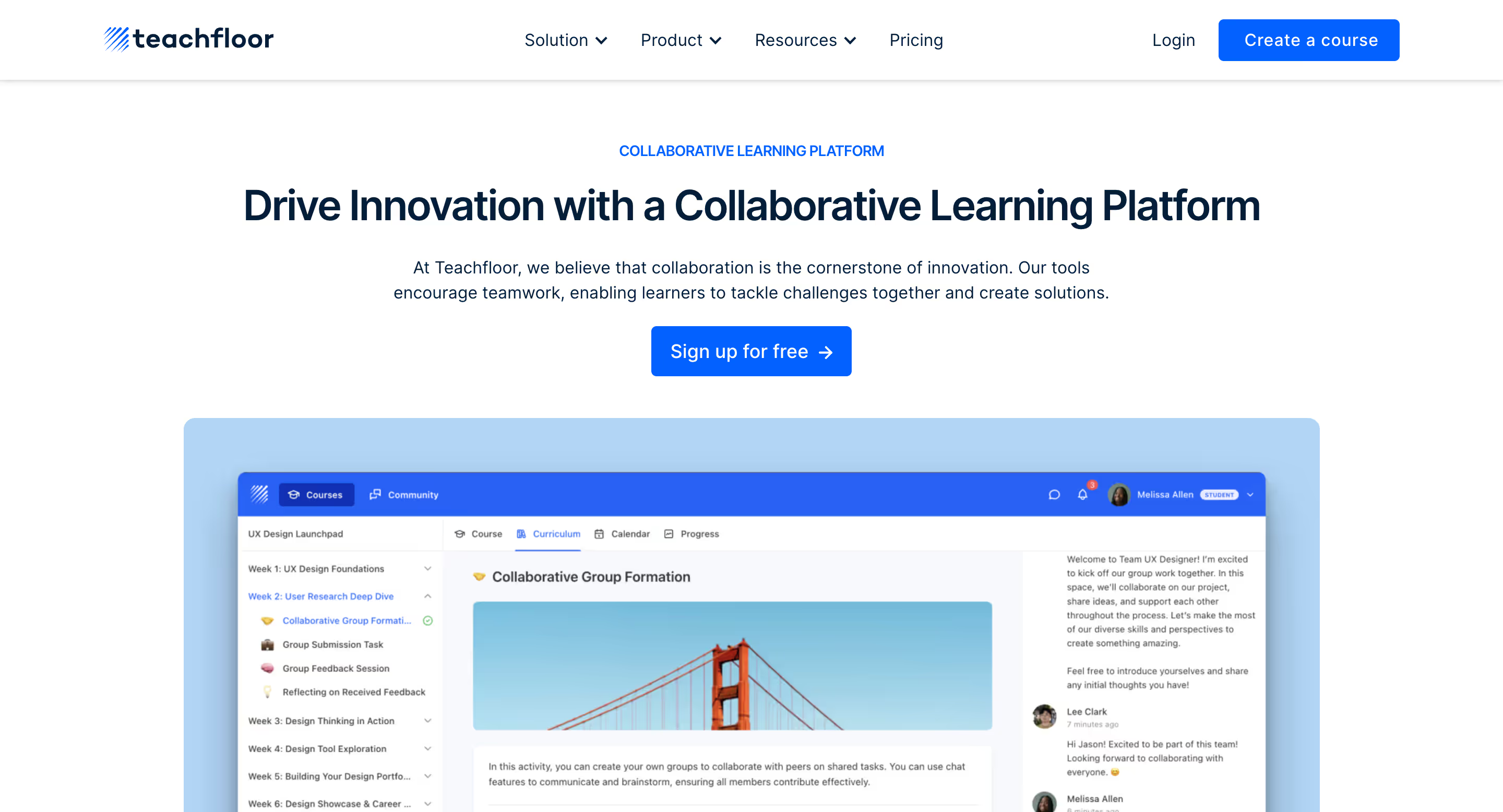
If your main goal is grading efficiency, Gradescope delivers exactly that. But if you want an all-in-one system that handles both teaching and evaluation, Teachfloor gives you the flexibility and feedback tools built right in. Both platforms make grading smarter and more manageable, proving that assessment can finally keep up with the pace of modern learning.
%201.svg)
%20(28).avif)

.png)


.avif)
.avif)
%20(11).avif)

%201.svg)

